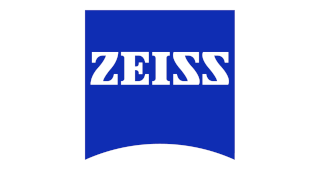DBS salvage surgery for severely affected patients with an implant infection
EANS Academy. Fortmann T. 10/04/21; 339151; EP08002

Thomas Fortmann
Contributions
Contributions
Abstract
Background: Infections of DBS hardware are a unwanted but common complications in DBS surgeries. Literature reports infection rates between a few percent up to even twenty percent in older case series. Different techniques for dealing with infected hardware are feasable. For minor infections a wound revision in combination with iv antibotic treatment is feasable. If hardware is visably infected, almost all centers will remove the infected hardware, leaving the patient in the preoperative state. Patients with tremor are often left with their fates of shaking so bad that are in need of care. Patients with dystonia might even suffer from a dystonic crisis. In order to spare patients from being in need of care a novel technique was thought of.
Methods: Most infections are located either at the generator or at the connectors, so that the wounds above the electrodes are often unaffected. It is possible to place new electrodes and lead them to the contralateral side. New extensions and a new generator can be placed to contralateral side as well. Then the infected system will be removed and the cut old electrode will be withdrawn through the connector wound. The patient will then be treated with iv antibiotics for a couple of days and oral medication until the sutures can be removed.
Results: Here we describe a small case serie of six patients in which that technique was used. The DBS was implantated on average for 272 days (13-805) before the salvage surgery. Two patients had no signs of inflammation. Three patients showed an elevated CRP-value (4,6-9,3mg/dL), one patient an elevated leukocyte count (14.000/µL). For all but one patient this surgery were successful until today (starting 2014, average 52,2 months (18-82 months)).
Conclusion: DBS salvage surgery seems to be a safe treatment alternative.
Methods: Most infections are located either at the generator or at the connectors, so that the wounds above the electrodes are often unaffected. It is possible to place new electrodes and lead them to the contralateral side. New extensions and a new generator can be placed to contralateral side as well. Then the infected system will be removed and the cut old electrode will be withdrawn through the connector wound. The patient will then be treated with iv antibiotics for a couple of days and oral medication until the sutures can be removed.
Results: Here we describe a small case serie of six patients in which that technique was used. The DBS was implantated on average for 272 days (13-805) before the salvage surgery. Two patients had no signs of inflammation. Three patients showed an elevated CRP-value (4,6-9,3mg/dL), one patient an elevated leukocyte count (14.000/µL). For all but one patient this surgery were successful until today (starting 2014, average 52,2 months (18-82 months)).
Conclusion: DBS salvage surgery seems to be a safe treatment alternative.
Background: Infections of DBS hardware are a unwanted but common complications in DBS surgeries. Literature reports infection rates between a few percent up to even twenty percent in older case series. Different techniques for dealing with infected hardware are feasable. For minor infections a wound revision in combination with iv antibotic treatment is feasable. If hardware is visably infected, almost all centers will remove the infected hardware, leaving the patient in the preoperative state. Patients with tremor are often left with their fates of shaking so bad that are in need of care. Patients with dystonia might even suffer from a dystonic crisis. In order to spare patients from being in need of care a novel technique was thought of.
Methods: Most infections are located either at the generator or at the connectors, so that the wounds above the electrodes are often unaffected. It is possible to place new electrodes and lead them to the contralateral side. New extensions and a new generator can be placed to contralateral side as well. Then the infected system will be removed and the cut old electrode will be withdrawn through the connector wound. The patient will then be treated with iv antibiotics for a couple of days and oral medication until the sutures can be removed.
Results: Here we describe a small case serie of six patients in which that technique was used. The DBS was implantated on average for 272 days (13-805) before the salvage surgery. Two patients had no signs of inflammation. Three patients showed an elevated CRP-value (4,6-9,3mg/dL), one patient an elevated leukocyte count (14.000/µL). For all but one patient this surgery were successful until today (starting 2014, average 52,2 months (18-82 months)).
Conclusion: DBS salvage surgery seems to be a safe treatment alternative.
Methods: Most infections are located either at the generator or at the connectors, so that the wounds above the electrodes are often unaffected. It is possible to place new electrodes and lead them to the contralateral side. New extensions and a new generator can be placed to contralateral side as well. Then the infected system will be removed and the cut old electrode will be withdrawn through the connector wound. The patient will then be treated with iv antibiotics for a couple of days and oral medication until the sutures can be removed.
Results: Here we describe a small case serie of six patients in which that technique was used. The DBS was implantated on average for 272 days (13-805) before the salvage surgery. Two patients had no signs of inflammation. Three patients showed an elevated CRP-value (4,6-9,3mg/dL), one patient an elevated leukocyte count (14.000/µL). For all but one patient this surgery were successful until today (starting 2014, average 52,2 months (18-82 months)).
Conclusion: DBS salvage surgery seems to be a safe treatment alternative.
{{ help_message }}
{{filter}}




